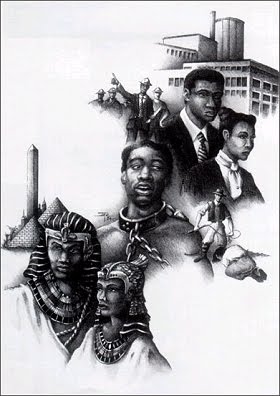
Today is the birthday of Sissieretta Jones who was a pioneer for African-American women in the world of Opera. Before Marian Anderson and Leontyne Price there was Sissieretta Jones. Here is a short biography of this great artist and humanitarian courtesy of African American Regisistry :
Sissieretta Jones was an early opera pioneer.
*The birth of Sissieretta Jones is remembered on this date in 1869. She was an African-American concert and spiritual singer. She was born Matilda S. Joyner in Portsmouth, Virginia, the daughter of a Baptist minister, Jeremiah Joyner, and Henrietta Joyner, from whom Jones apparently inherited her enchanting soprano voice.
When Jones was 7, the family moved to Providence, in search of better educational and economic opportunities. At 14, she began her first formal music training at the Providence Academy of Music and at music schools in Boston. The same year, she married David Richard Jones, "a gambling man" who went on to manage his wife's career and lavishly spend their money until the couple divorced, in 1900.
In 1892, at the age of 23, Jones sang in New York's Madison Square Garden. A newspaper review of the performance compared her to famous Italian opera singer Adelina Patti, and it condescendingly tagged Jones as "the Black Patti," a nickname she disliked but was unable to shake. Early in life, her family moved to Providence, Rhode Island, and she studied voice at the Providence Academy of Music, and the New England Conservatory.
Jones had many successes in her career: several of them were breakthroughs that paved the way for later artists. She sang at the Chicago World Fair in 1893, as well as Madison Square Garden and for several Presidents of the United States. From 1895 to 1916, Jones led a troupe of singers and musicians on a tour through the United States and abroad. Called the Black Patti Troubadours, the group performed minstrel shows and musical skits. While Jones initially considered the minstrel performances demeaning, she was able to expand her repertoire by singing spirituals and opera arias for the show's finale. The show served as a training ground for hundreds of black entertainers.
Jones was given many gifts from admirers, among them, a medal from President Hippolyte of Haiti, a bar of diamonds and emeralds from the citizens of St. Thomas, an emerald shamrock from the Irish people of Providence and a diamond tiara from the governor general of a West Indies island. She often wore her 17 medals across her chest during performances. After touring for about 20 years, the Troubadours disbanded, and Jones returned to her home in Providence to care for her ailing mother and grandmother.
Abroad, she sang for royalty. It was not all positive, however. Early in her career, Jones was dubbed the "Black Patti" by press: this was a dismissive (although intended as complimentary) comparison to Adelina Patti, a successful Italian soprano at that time. The name stuck. As well, she was not able to perform at the Metropolitan Opera in New York: this obstacle would not be overcome until 1955, by contralto Marian Anderson. She left the concert stage in 1896 for the vaudeville act, Black Patti's Troubadours. She retired in 1916.
She lived the next 18 years at her home on Wheaton Street, taking in homeless children and selling mementos from her days of glory to pay her living expenses. Classical music is full of issues of race and gender. A casual glance through a standard music history textbook will usually reveal names such as Ludwig van Beethoven, Franz Joseph Haydn, Henry Purcell, Richard Wagner, and Franz Schubert (all white men). Often, those who were not white or male were largely ignored. One exception to this, however, was Sissieretta Jones.
Jones died of cancer in June 1933 in Rhode Island Hospital.
She was buried in Grace Church Cemetery.
Reference:
Reference Library of Black America Volumes 1 through 5
Edited by Mpho Mabunda



















No comments:
Post a Comment